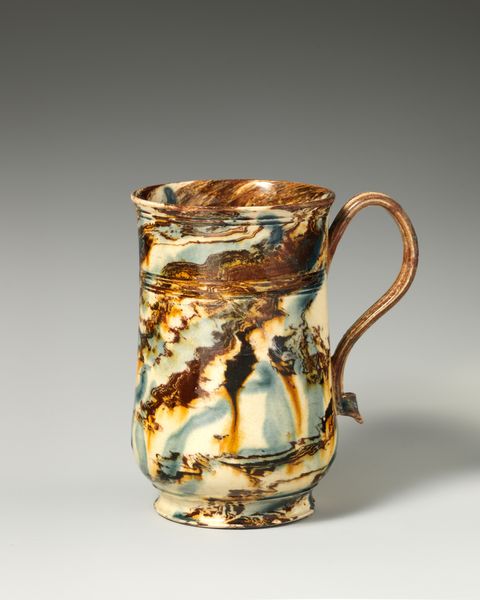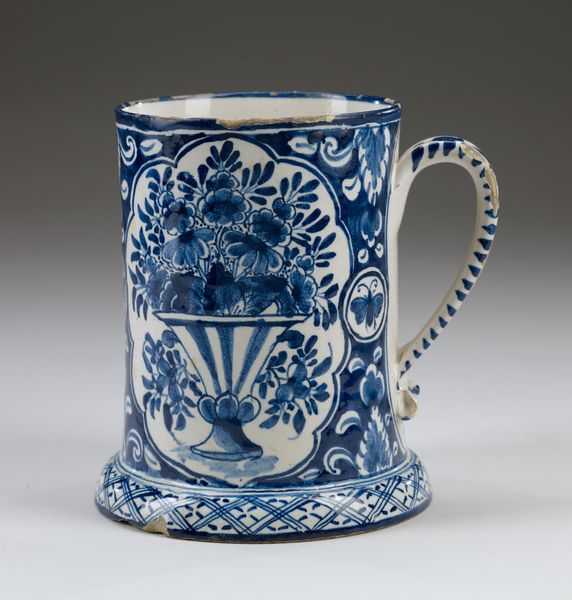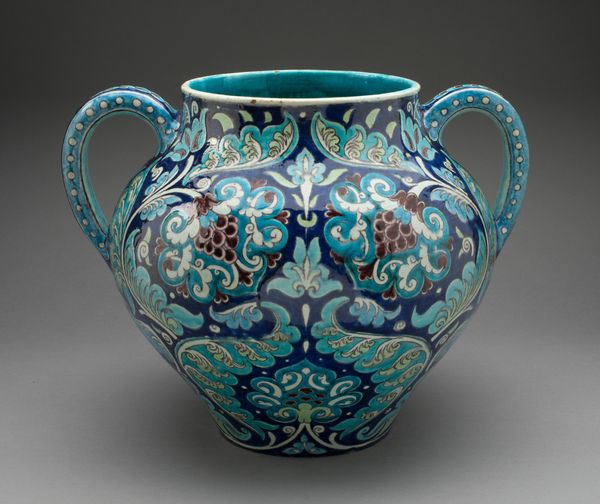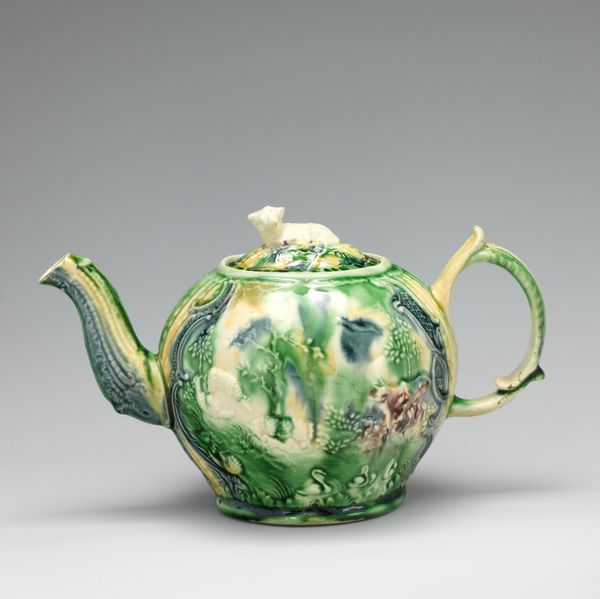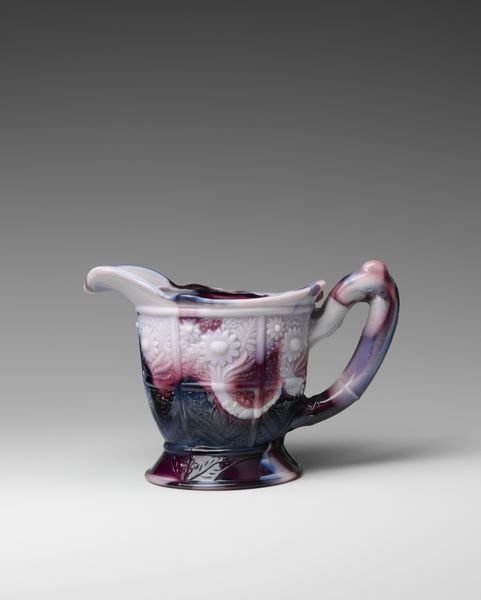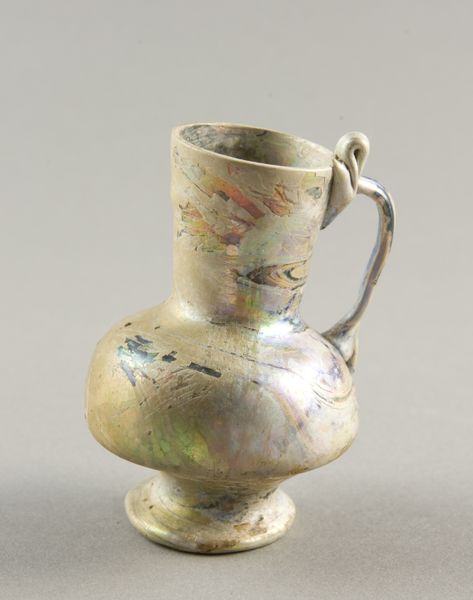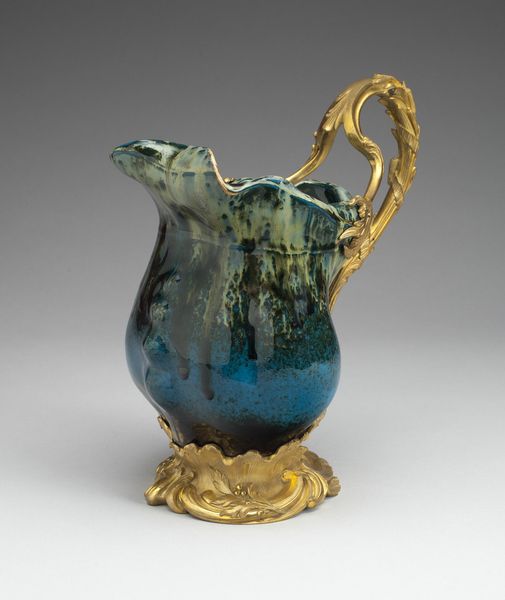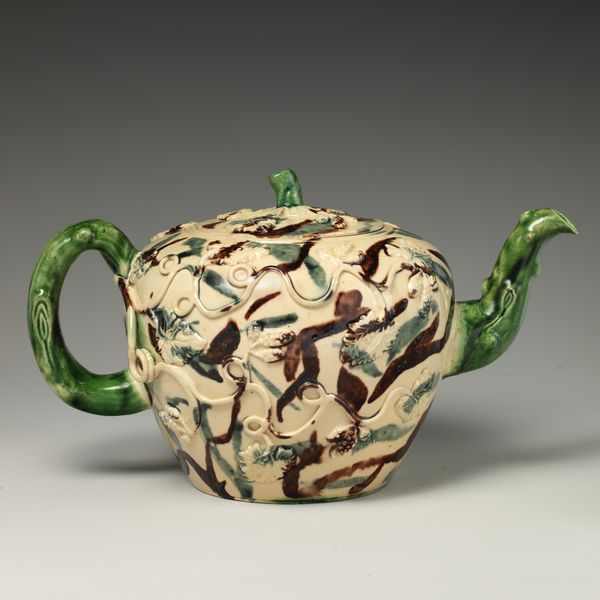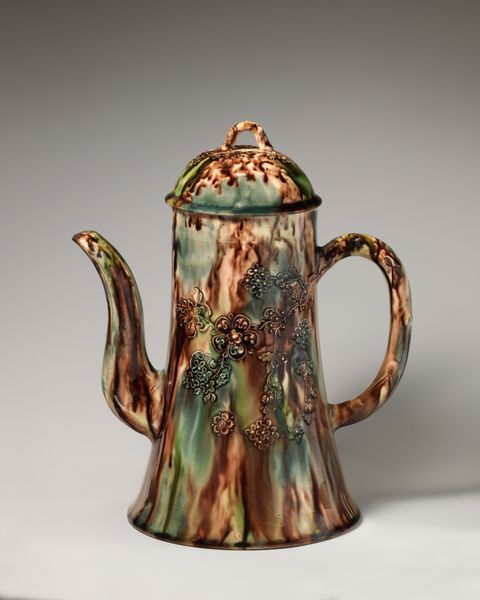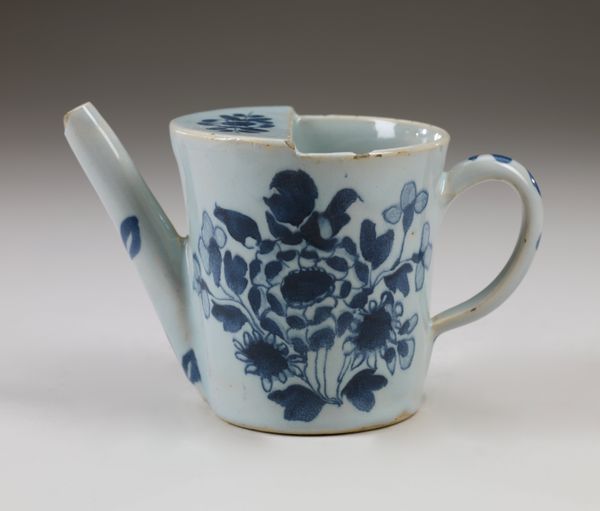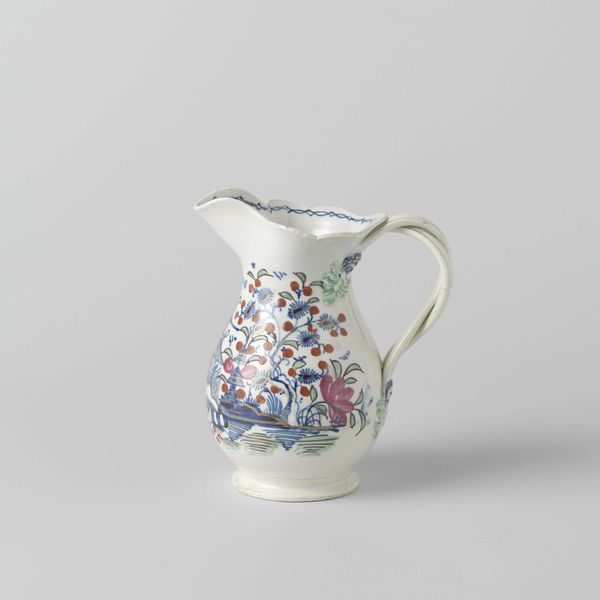
ceramic, sculpture
#
ceramic
#
sculpture
#
decorative-art
Dimensions: Height: 8 5/8 in. (21.9 cm)
Copyright: Public Domain
Curator: Here we have Ralph Wood the Younger’s “Jug,” made in 1788. It resides here with us at the Metropolitan Museum of Art. Editor: Well, immediately I’m struck by its playful, almost theatrical quality. The textures, colors...it practically leaps off the shelf. Curator: Absolutely. Consider the labor involved: the mold-making process, the slip-casting to get that tree-bark texture, the hand-applied figures. It blurs the lines between functional object and sculptural form. You know the Wood family ran a prolific Staffordshire pottery. Production lines involved multiple hands and specialized skills. How might this division of labor influence the artistic vision? Editor: And isn’t it fascinating how the central "tree" form serves as a symbolic backdrop? The figures suggest innocence, almost Edenic harmony, picking fruit together. And what of that inscription at the top, barely visible in the shadow? Curator: The inscription? Now you’re piquing my interest! The factory itself probably stamped its name, an advertisement even then! Editor: But even beyond branding, look at how those figures engage. A simple pastoral scene? Or are these symbolic figures of courtship, maybe even temptation represented by those enticing "fruits?" The very shape—a jug, a vessel—suggests themes of nourishment and perhaps…plenty? Curator: The iconography invites contemplation about the roles assigned to individuals in society. Consider that raw materials like clay were extracted, refined, transported—often by subjugated labor! And these jugs served specific domestic roles, pouring liquid. How was class performed within a dinner setting? Editor: Precisely! The act of pouring, offering… it's imbued with ritualistic weight, going back centuries. Even that twining handle…it mimics vines, continuity, generations of use. Curator: Fascinating to consider production of luxury items with the era's socio-political landscape, particularly consumption practices, yes? The artistry, of course, also becomes about power…and who got to wield it. Editor: Right. So more than mere decoration, it's a kind of memory theater, evoking layers of associations: pleasure, ritual, desire. I will certainly think of those contexts whenever I look at it. Curator: Indeed, it's clear there are multiple narratives embedded within, extending beyond this singular ceramic. The socio-economic aspects always have profound weight for me, though. Editor: Agreed. Both sides truly inform a greater perspective when looking at objects like these.
Comments
No comments
Be the first to comment and join the conversation on the ultimate creative platform.
